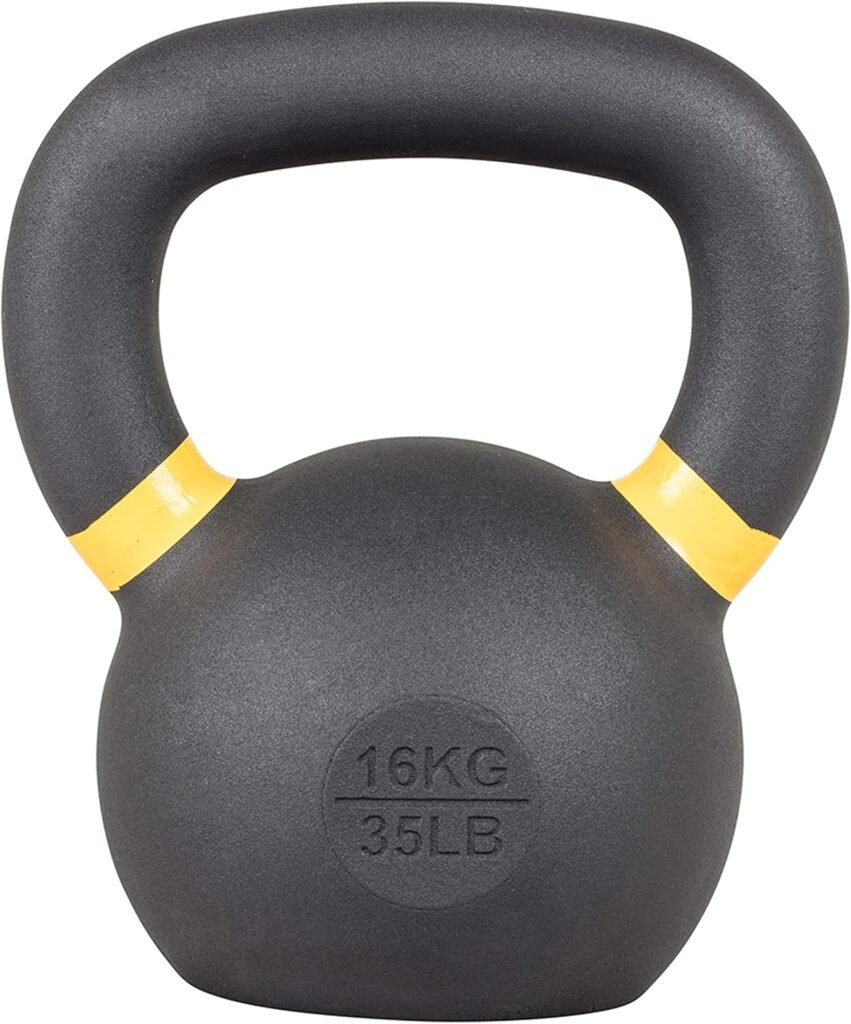Have you ever wondered what makes the kettlebell swing such a powerful exercise? It’s time to take a closer look at this dynamic movement and discover how it helps you build strength, stamina, and agility while working multiple muscle groups simultaneously.

What Is a Kettlebell Swing?
Kettlebell swings are a versatile exercise that can elevate your fitness routine. With its roots in Russian strength training, this exercise involves swinging a kettlebell between your legs and up to shoulder height. It’s a full-body movement that integrates both power and precision.
The Mechanics of a Kettlebell Swing
The kettlebell swing primarily relies on a hip hinge—the same action you use to deadlift. Your feet should be slightly wider than hip-width apart as you grip the kettlebell with both hands. As you hinge at the hips, the kettlebell moves between your legs. Extension of the hips and a strong drive of the glutes propel the kettlebell forward to chest height.
Muscles Worked by the Kettlebell Swing
The kettlebell swing is often lauded for its efficiency and effectiveness, primarily because it engages multiple large muscle groups simultaneously. Let’s explore how it targets specific areas of your body:
Core Muscles
Your core muscles provide the foundation for almost every movement you make, and they play a significant role in the kettlebell swing. The swing demands stabilization from your torso, engaging your rectus abdominis, obliques, and transverse abdominis to maintain proper form and control the motion of the kettlebell.
Lower Body: Glutes and Hamstrings
One of the primary benefits of the kettlebell swing is its activation of the posterior chain, particularly the glutes and hamstrings. As you drive the kettlebell forward, your glute muscles extend your hips powerfully, while your hamstrings provide stability and assist in the upward swing.
Quadriceps and Calves
While the glutes and hamstrings take the main stage, your quadriceps and calves also get a workout. As you initiate the hip hinge and stand tall at the end of the movement, your quadriceps support the extension of your knees, and your calves help stabilize your ankles.
Upper Body: Shoulders and Back
The kettlebell swing also engages your upper body. While your hips generate the swing’s momentum, your shoulders provide stability and control at the top of the movement. Your deltoids and rhomboids help manage the weight of the kettlebell, while your latissimus dorsi assist in maintaining your arm position.
Grip and Forearms
Don’t underestimate the role of your grip and forearm muscles. Holding the kettlebell securely throughout the swing demands a robust grip. This helps develop strength in your forearms and improves your overall grip endurance.
You are currently viewing a placeholder content from YouTube. To access the actual content, click the button below. Please note that doing so will share data with third-party providers.
More InformationThe Benefits of the Kettlebell Swing
Now that you understand which muscles the kettlebell swing targets, let’s look at the broader benefits that make this exercise a staple in many fitness regimes.
Cardiovascular Conditioning
Kettlebell swings have the unique advantage of offering both strength and cardiovascular training. The repetitive, dynamic motion elevates your heart rate, enhancing your cardiovascular fitness and endurance.
Enhanced Power and Explosiveness
By focusing on hip extension and the explosive nature of the swing, you develop power and improve your body’s ability to perform quick, strong movements. This power enhancement translates well to other athletic pursuits.
Improved Fat Burning
Thanks to its involvement of large muscle groups and cardiovascular demands, the kettlebell swing is effective for burning calories. It increases your metabolic rate not just during the workout, but for hours afterward, aiding fat loss efforts.
Increased Posterior Chain Strength
A well-developed posterior chain is crucial for overall athletic performance and posture. The kettlebell swing’s emphasis on the glutes, hamstrings, and lower back promotes strength and stability in these vital areas.
Perfecting Your Kettlebell Swing Form
To reap all the benefits of the kettlebell swing, proper form is essential. Here’s how you can ensure your technique is safe and effective.
Starting Stance
Begin with your feet slightly wider than shoulder-width apart, with your knees slightly bent. Hold the kettlebell with both hands in an overhand grip.
The Hinge
Push your hips back while keeping your chest open and head neutral. Your back should remain flat to prevent injury. The swing initiates from this hip hinge position.
Generating Momentum
Swing the kettlebell back between your legs and then drive through your hips to propel the kettlebell forward and upward to chest height. The movement should be fluid, using your hips and core rather than your arms.
The Swing and Descent
As the kettlebell reaches shoulder height, control its descent smoothly. Allow gravity to bring the kettlebell back down between your legs, resetting your hinge for the next swing.
Maintaining Control
Throughout the swing, maintain core engagement and keep your shoulders relaxed. Your arms act as guides, and the power should stem from your hips and legs.
Common Mistakes and How to Avoid Them
Even with the best intentions, mistakes can happen. Let’s identify some common pitfalls and how you can steer clear of them for a safe and effective kettlebell swing.
Using Your Arms
A common mistake is relying on your arms to lift the kettlebell. Remember, your arms are just a conduit for the momentum generated by your hips. Focus on that hip drive.
Arching Your Back
Incorrect posture, such as arching your back, can lead to injury. Stay mindful to keep a neutral spine, engaging your core to support proper alignment.
Lifting Too Heavy Too Soon
Beginners may feel tempted to start with a heavy kettlebell, but technique is more important than weight. Start with a manageable weight and prioritize form before progressing to heavier loads.
Incorrect Breathing
Breathing correctly can help maintain your rhythm and stability. Inhale as you prepare for the swing and exhale sharply at the top of the movement. This helps stabilize your core and enhances performance.
Progressing Your Kettlebell Swing
Once you’ve mastered the basic kettlebell swing, consider variations to continue challenging yourself and preventing workout monotony. Here’s how you can progress:
Single-Arm Kettlebell Swing
Switch to a single-arm swing to introduce a new challenge. This variation engages your core further to maintain balance, enhancing unilateral strength and coordination.
Alternating Kettlebell Swing
Incorporate alternating swings to boost coordination and core activation. This involves switching hands at the top of the swing while controlling the kettlebell’s momentum.
Heavy Kettlebell Swing
Once you’re comfortable with lighter weights, gradually increase the weight of the kettlebell. This progression develops strength and power, taking your training to the next level.

Conclusion: Embrace the Power of Kettlebell Swings
The kettlebell swing is a powerful tool in your fitness arsenal. By engaging multiple muscle groups and providing cardiovascular benefits, it offers a comprehensive workout. Mastering the form and progressing safely ensures you can harness its full potential and enhance your overall fitness journey. Enjoy the dynamic challenge it brings to your workouts.





